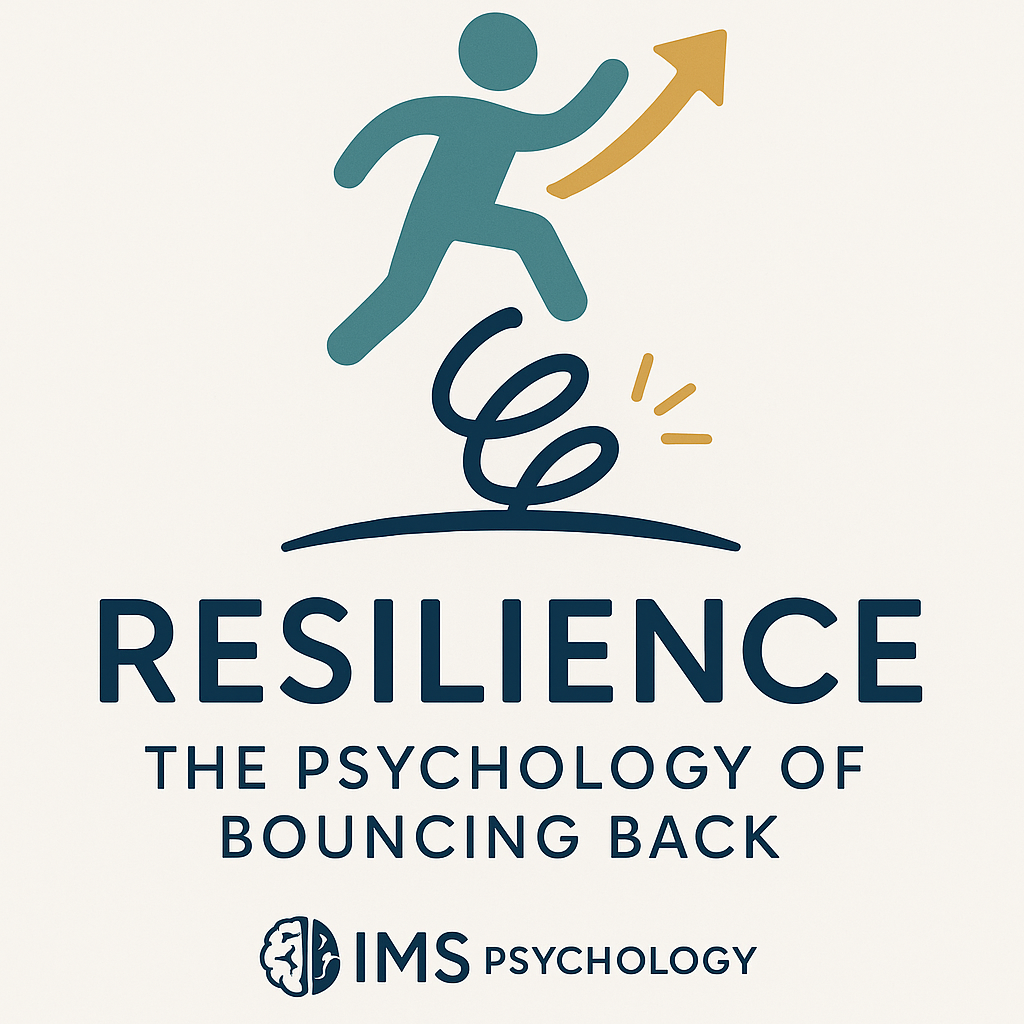
Resilience: The Psychology of Bouncing Back
Share
Resilience: The Psychology of Bouncing Back
Resilience is the ability to bounce back from stress and adversity. Discover the psychology behind resilience and evidence-based ways to strengthen it in daily life.
Introduction: Why Resilience Matters
Life brings setbacks — job loss, heartbreak, health struggles, and unexpected challenges. Some people seem to crumble, while others adapt and emerge stronger. This difference often comes down to resilience — the psychological capacity to recover from adversity, stress, or trauma.
Resilience is not about ignoring pain or “staying positive at all costs.” It is about cultivating inner strength, emotional flexibility, and healthy coping strategies. The science of resilience shows that it can be developed and strengthened over time.
What Is Resilience?
In psychology, resilience is defined as the process of adapting well in the face of adversity, trauma, tragedy, or stress.
-
It’s not a fixed trait — resilience is a set of behaviors, thoughts, and actions that can be learned.
-
Resilience doesn’t mean avoiding stress or hardship. Instead, it’s the ability to move through challenges without becoming permanently overwhelmed.
The Psychology of Resilience
Research in positive psychology, trauma studies, and neuroscience has identified several key factors that contribute to resilience:
1. Cognitive Flexibility
Resilient people can reframe challenges, viewing setbacks as opportunities to learn. Cognitive Behavioral Therapy (CBT) highlights the role of shifting negative thought patterns into balanced perspectives.
2. Emotional Regulation
Resilience depends on the ability to manage strong emotions. Techniques from Dialectical Behavior Therapy (DBT) — such as distress tolerance and mindfulness — help individuals stay grounded during crises.
3. Secure Relationships
Strong social connections buffer against stress. Having people who provide emotional support, empathy, and encouragement is one of the strongest predictors of resilience.
4. Meaning-Making
According to Acceptance and Commitment Therapy (ACT), resilience grows when individuals connect challenges to personal values. Finding purpose helps transform pain into growth.
5. Nervous System Regulation
Neuroscience shows that chronic stress can dysregulate the autonomic nervous system. Practices like deep breathing, vagal toning, and grounding can restore balance, supporting resilience on a biological level.
Why Some People Struggle With Resilience
Resilience varies from person to person due to a combination of factors:
-
Early childhood experiences (trauma can make stress harder to regulate later in life).
-
Genetics (some people are more stress-sensitive biologically).
-
Environmental stressors (financial hardship, discrimination, or chronic illness).
-
Mental health challenges (anxiety, depression, PTSD).
The important message: struggling with resilience is not a sign of weakness. It reflects real challenges — but resilience can be strengthened.
The Benefits of Building Resilience
Resilience has been linked to:
-
Lower risk of anxiety and depression
-
Better physical health outcomes
-
Improved problem-solving and decision-making
-
Greater life satisfaction and optimism
-
Increased ability to cope with uncertainty
Evidence-Based Ways to Build Resilience
Resilience is a skillset. Here are practical, science-backed ways to strengthen it:
1. Reframe Negative Thoughts (CBT)
-
Challenge catastrophizing by asking: “What evidence do I have that this worst-case scenario will happen?”
-
Replace with balanced perspectives: “This is difficult, but I can take it one step at a time.”
2. Practice Mindfulness
-
Ground in the present moment through breathing or body scans.
-
Reduce rumination and anchor attention to now, instead of replaying fears.
3. Strengthen Social Support
-
Share struggles with trusted people.
-
Build rituals of connection: regular check-ins, shared meals, or community groups.
4. Develop Problem-Solving Skills
-
Break challenges into smaller, manageable steps.
-
Focus on what you can control rather than what you cannot.
5. Build Self-Compassion
-
Speak to yourself as you would to a close friend.
-
Recognize that setbacks are part of being human.
6. Support Your Body
-
Adequate sleep, exercise, and nutrition directly impact stress tolerance.
-
Gentle movement such as yoga or walking helps regulate the nervous system.
Resilience and Post-Traumatic Growth
Sometimes, resilience goes beyond recovery — leading to post-traumatic growth. This refers to positive psychological change that occurs after adversity, such as:
-
Deeper appreciation for life
-
Stronger relationships
-
A renewed sense of purpose
-
Greater inner strength
While growth does not erase pain, it shows how resilience can transform suffering into meaning.
When to Seek Support
If setbacks feel overwhelming or resilience seems out of reach, professional support can help. Trauma-informed therapy, resilience training, and coaching offer structured tools to build coping skills.
Practical Tools You Can Use Today
At IMS Psychology, we design downloadable, science-based workbooks that help individuals build resilience step by step. For example, our [Resilience Toolkit Workbook] provides exercises in reframing, grounding, and self-compassion to strengthen your ability to bounce back.
Conclusion: From Survival to Strength
Resilience is not about avoiding pain or pretending everything is fine. It is about meeting challenges with flexibility, compassion, and courage. By learning how to regulate emotions, reframe thoughts, and build supportive relationships, anyone can strengthen resilience.
Bouncing back does not mean going back to who you were — it means growing into someone even stronger.
If you’d like guided support, explore the IMS Psychology workbooks, designed to transform psychological research into practical tools for everyday life.
External Source
American Psychological Association – Building Your Resilience
https://www.apa.org/topics/resilience